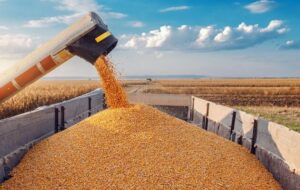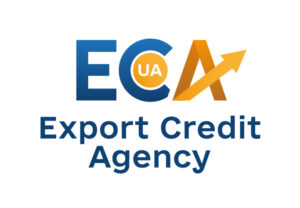
Cow prices in February 2025 increased by 20-46% depending on fatness, according to the Association of Milk Producers (AMP).
According to the report, the average price for cows below average fatness in the first half of February 2025 increased to 73 UAH/kg excluding VAT, which is 23 UAH or 46% more than a month earlier, for cows of average fatness – up to 72 UAH/kg excluding VAT (18.25 UAH or 34% more), for higher fatness – up to 70 UAH/kg excluding VAT (12 UAH or 20% more).
“Over the past few weeks, prices for cattle have been rising in Ukraine, driven by an increase in live exports in December-January. The outbreak of foot-and-mouth disease in the German state of Brandenburg led to a reduction in the export of live animals from the EU. However, the demand for cattle in foreign markets is quite active during the period of preparation for Ramadan in Muslim countries,” the industry association explained.

Ukrainian furniture makers exported $909 million worth of products in 2024, up 15.5% year-on-year, Oksana Donska, a board member of the Ukrainian Association of Furniture Manufacturers (UAFM) and an export expert, toldInterfax-Ukraine.
“Together, the woodworking industry and the furniture industry are among the top 10 export commodity groups with a share of 5.7% in Ukraine’s merchandise exports. I am confident that we will maintain the dynamics of growth in furniture exports and there is a chance that this year we will cross the $1 billion mark,” Donska said.
The expert explained such a positive outlook by the trends of the global furniture market, which has returned to growth, for example, in European countries from 8 to 10% per year.
“Another plus is that IKEA is returning to us to purchase a fairly wide assortment matrix of furniture. At the same time, the number of exporters to large companies is growing. This also applies to small and medium-sized businesses that are forced to export because the domestic market has shrunk significantly,” she says.
According to her, before the war, experts estimated the capacity of the domestic market at $1-1.2 billion, but now it has halved to about $500-600 million.
At the same time, Ukrainian furniture makers achieved export growth in 2024 amid a shortage of personnel (by 30-40%, according to manufacturers). The furniture makers were able to optimize their costs and maintain competitive prices thanks to grant support from both the government and international donors, which helped them to change equipment in their factories and increase their productivity. According to Donska’s estimates, about 50 of the most active manufacturers (out of about 11,000 companies) have attracted state aid alone, and a significant number of them have used it to scale up and move from small to medium-sized businesses. As for microbusinesses, they actively chose a narrow specialization and sought partnerships.
Industry associations, both national and local, helped solve the issue of human resources and export promotion. According to Donska, thanks to UAFM training programs, more than 800 people have been involved in the industry since December last year, and the furniture school has graduated 295 equipment operators and furniture designers. The export promotion project also showed good results. “Participating in an international exhibition with a separate stand is expensive and not affordable for everyone. But joining the national exposition for a few square meters is already possible. Thanks to this program, more than 200 companies have shown their products at international exhibitions in Poland, Germany, the UK, Italy and the UAE,” Donska said. Individual furniture clusters (Lviv and Rivne) also addressed the issue of training and staffing.

As of February 14, Ukraine exported 27.275 mln tonnes of grains and pulses since the beginning of 2024-2025 marketing year, of which 1.585 mln tonnes were shipped since the beginning of the current month, the press service of the Ministry of Agrarian Policy and Food reported, citing the State Customs Service.
According to the report, as of the same date last year, the total shipments amounted to 26.269 million tons, including 2.393 million tons in February.
In particular, since the beginning of the current season, Ukraine has exported 11.464 mln tonnes of wheat (10.14 mln tonnes in 2023/24 MY), 2.106 mln tonnes of barley (1.507 mln tonnes), 10.8 thsd tonnes of rye (1 thsd tonnes), and 13.27 mln tonnes of corn (14.355 mln tonnes).
The total export of Ukrainian flour since the beginning of the season as of February 14 is estimated at 45.5 thsd tonnes (in 2023/24 MY – 70.6 thsd tonnes), including wheat – 42 thsd tonnes (66.9 thsd tonnes).

The Export Credit Agency (ECA) supported UAH 1.31 billion of Ukrainian exports in January 2025, which is twice as much as in the entire first quarter of 2024, First Vice Prime Minister and Minister of Economy Yulia Svyrydenko said.
“One of the key areas of the ‘Made in Ukraine’ policy is to support and develop non-resource exports. Thanks to cooperation with the ECA, Ukrainian exporters reduce their risks and get the opportunity to get cheaper loans, and thus increase sales abroad.
It is important that such cooperation is expanding, and each hryvnia of insurance liability is converted into almost UAH 14 of future export revenue,” the press service of the Ministry of Economy quoted her as saying.
The ministry noted that in the first month of 2025, export credits in the ECA were insured by Creditwestbank, FUIB, and Oschadbank. Entrepreneurs from Khmelnytskyi and Zaporizhzhia regions and the city of Kyiv used this opportunity most often.
These companies produce furniture, ready-made grain and flour products, alcoholic and non-alcoholic beverages, and dairy products. Their products are exported to 17 countries, including Bulgaria, Denmark, Germany, Hungary, the United Arab Emirates, and Romania, the Ministry of Economy added.
As reported, in 2024, the ECA supported UAH 7.53 billion of Ukrainian exports. The tools of the Export Credit Agency of Ukraine are one of the elements of the “Made in Ukraine” policy. Its goal is to support non-resource exports, develop production and attract investment in the real sector.

The U.S. Department of Agriculture (USDA) has adjusted its forecast for Ukraine’s wheat exports for the 2024/25 marketing year (MY, July 2024-June 2025) and lowered it by 0.5 million tons to 15.5 million tons, and corn by 1 million tons to 22 million tons.
The updated USDA forecast for February indicates that in 2024/25 MY wheat and corn production in Ukraine will remain at 22.9 mln tonnes and 26.5 mln tonnes, respectively.
At the same time, a slight increase in wheat production and consumption is expected, however, according to USDA, trade volumes and ending stocks will be lower. Accordingly, the forecast for global wheat production was increased by 0.6 million tons to 793.8 million tons, due to increased production in Kazakhstan (+0.6 million tons, to 18.6 million tons) and Argentina (+0.2 million tons, to 17.7 million tons).
Global wheat consumption will also increase by 1.8 mln tonnes to 803.7 mln tonnes due to higher use of feed grains and transitional residues in the EU, Kazakhstan, Thailand and Ukraine.
At the same time, the global wheat trade will decrease by 3 million tons to 209 million tons due to the decline in exports by the EU (-1.0 million tons, to 28.0 million tons), Mexico, Russia (-0.5 million tons, to 45.5 million tons), Turkey and Ukraine (-0.5 million tons, to 15.5 million tons). The largest reduction is expected in China – by 2.5 million tons, to 8.0 million tons, which will be the lowest imports in the last five years, although last year this country was the world’s leading supplier of wheat.
The same picture is expected for the world ending stocks in 2024/25 MY, which, according to the updated forecast, will decrease by 1.3 mln tonnes to 257.6 mln tonnes, due to the reduction in China, partially offset by the increase in stocks in Russia, Kazakhstan and Ukraine.
In 2024/25 MY, the global corn market is expected to decline in all indicators. The global corn production is expected to decline by 1.9 mln tonnes to 1 bln 212.5 mln tonnes, mainly due to Argentina (-1.0 mln tonnes, to 50.0 mln tonnes) due to lower yields as a result of heat and Brazil (-1.0 mln tonnes, to 126.0 mln tonnes) and slow sowing.
The main changes in the world corn trade are related to the decrease in the forecasted corn exports from Brazil (-1.0 million tons, to 46.0 million tons), Ukraine (-1.0 million tons, to 22.0 million tons) and South Africa. External ending stocks of corn for 2024/25 MY were reduced by 3 million tons to 290.3 million tons.